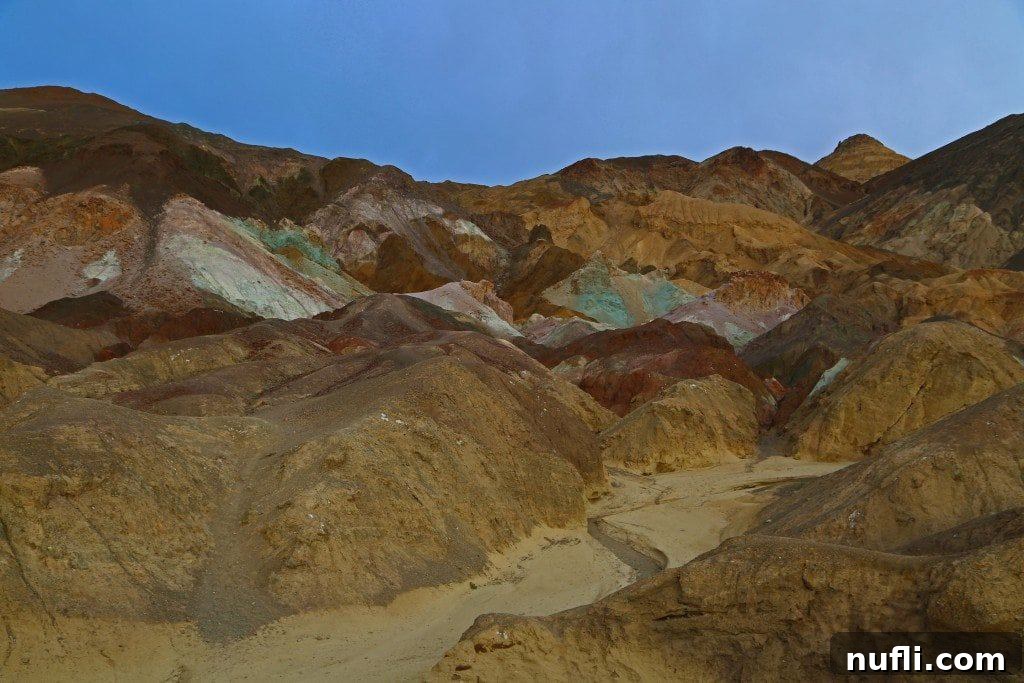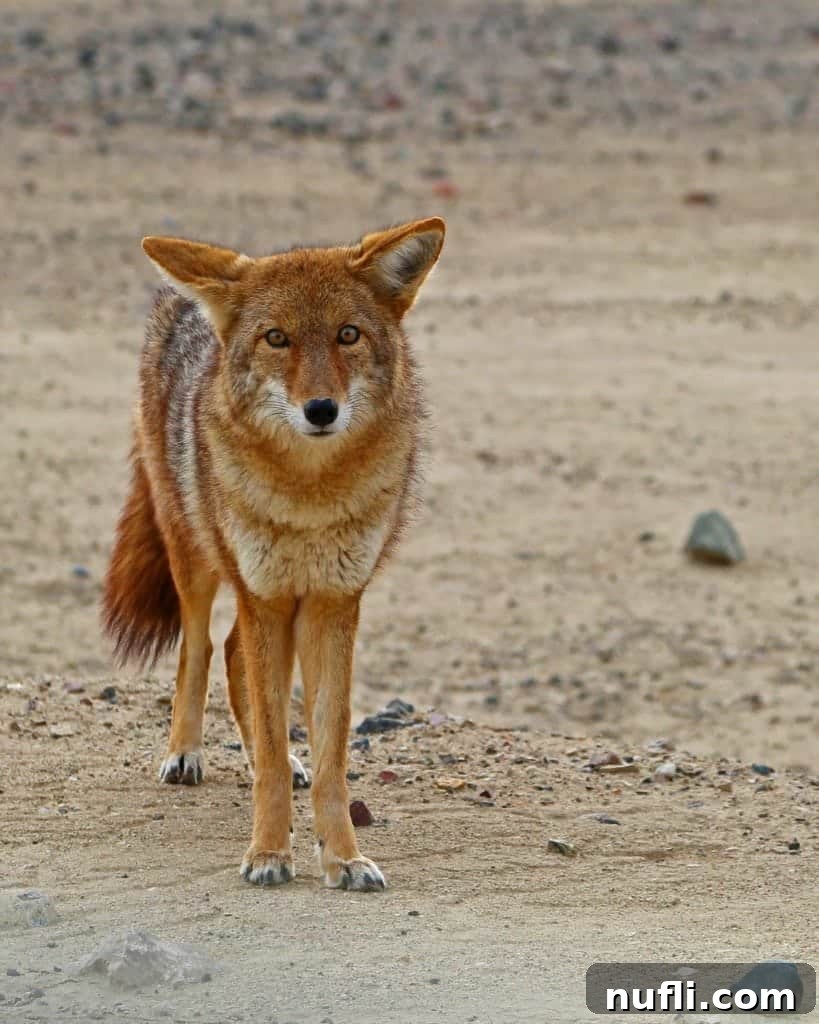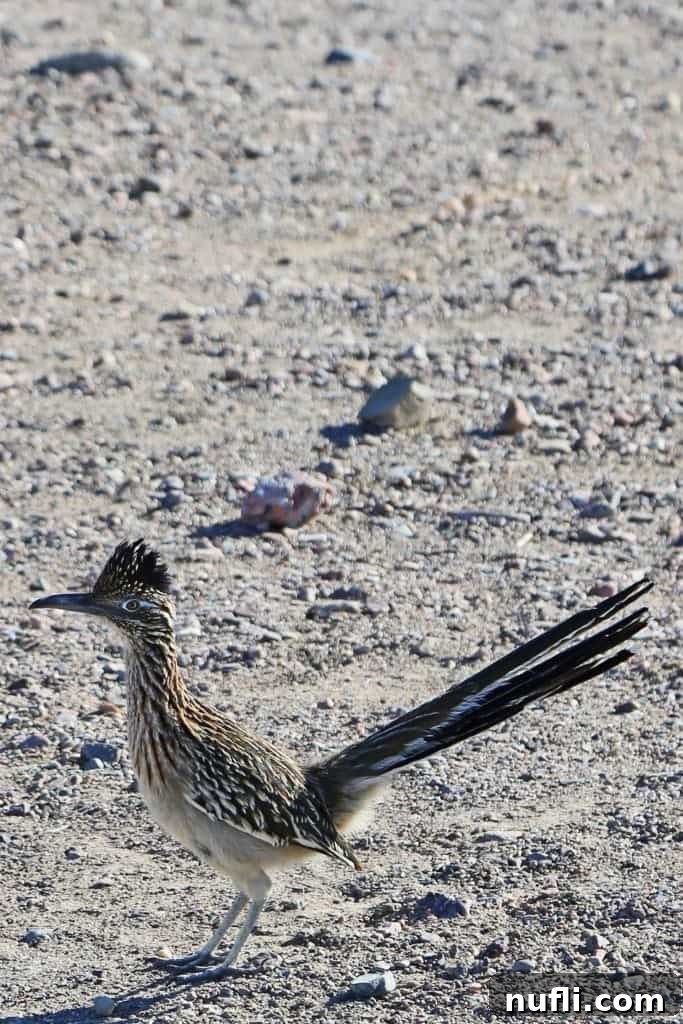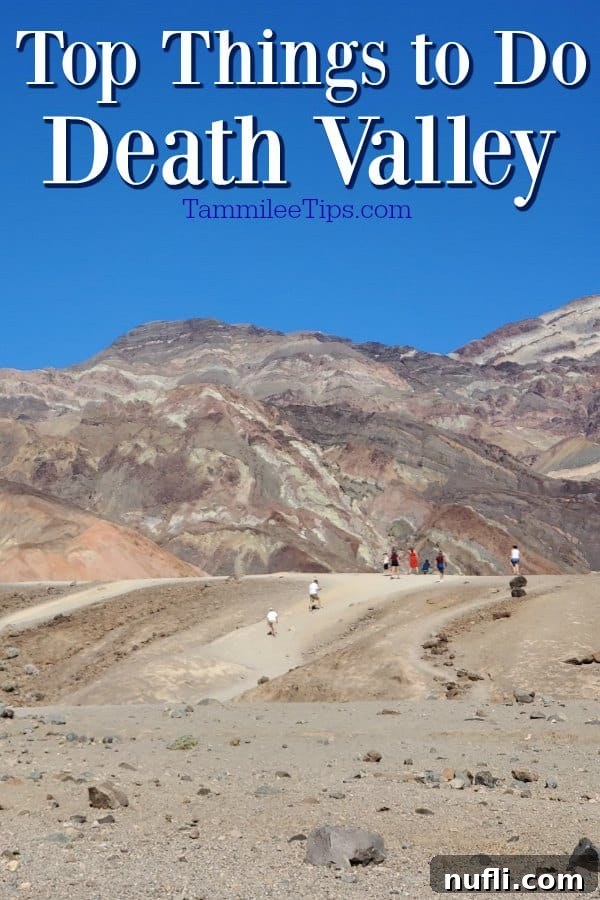Unveiling Death Valley: An Epic Journey Through America’s Most Unique National Park
Death Valley National Park often conjures images of scorching sun and endless, barren landscapes. Yet, this captivating park consistently astonishes visitors with its incredible diversity, vibrant ecosystems, and a surprising array of activities that defy its reputation. Far from being merely a desolate expanse, Death Valley is a land of extremes and hidden wonders, from the lowest point in North America to majestic sand dunes, colorful canyons, and even unexpected oases teeming with life. As avid explorers of this extraordinary destination, we’re thrilled to share our top recommendations for experiencing the magic of Death Valley. Prepare to be amazed by a park that promises an adventure unlike any other, challenging perceptions and leaving an indelible mark on every traveler’s soul.
This truly is a fascinating park with an unparalleled abundance of natural and historical attractions. To fully appreciate its grandeur and explore its many facets, we highly recommend allocating more time than you initially anticipate. Every corner turned reveals a new marvel, inviting deeper exploration and rewarding curious adventurers with unforgettable sights.

Quick Guide: Planning Your Death Valley Adventure
Whether you’re short on time or eager to get started, here are some essential links for your trip planning:
🏨 Find the Best Hotels and Vacation Rentals
📍 Discover Exciting Death Valley Tours and Activities
Essential Tips for Visiting Death Valley National Park
Before diving into the incredible attractions, it’s crucial to prepare for a safe and enjoyable visit. Death Valley is a land of extremes, and proper planning is key to a memorable experience.
Best Time to Visit
While the park is open year-round, the ideal time to visit Death Valley is during the cooler months, from late fall to early spring (November to April). During this period, daytime temperatures are more moderate, making outdoor activities like hiking and sightseeing much more pleasant. Summer months (May to October) can see temperatures soar above 120°F (49°C), making extensive outdoor activity dangerous and not recommended for most visitors. Always check the current weather forecasts before your trip.
What to Pack
Regardless of the season, essentials include plenty of water (at least one gallon per person per day, even more if hiking), sun protection (wide-brimmed hat, sunglasses, high-SPF sunscreen), sturdy closed-toe shoes suitable for varied terrain, and layered clothing. Evenings can be surprisingly cool, especially in winter. A detailed map of the park and a full tank of gas are also indispensable, as services are limited.
Accommodation and Services
Within the park, lodging options include Furnace Creek Ranch (The Oasis at Death Valley) and Stovepipe Wells Village. Both offer amenities like restaurants, general stores, and gas stations. Camping is also available at various campgrounds. Due to the park’s remoteness, cell service is often unreliable or non-existent in many areas, so downloading maps and information beforehand is highly recommended.

For an enhanced exploration of the park’s unique geology and hidden gems, consider joining one of the many insightful tours offered in Death Valley. You can browse and book amazing excursions HERE.
Unforgettable Experiences: Top Things to Do in Death Valley
Death Valley National Park truly offers a kaleidoscope of experiences, from ancient geological formations to historical mining sites and incredible wildlife. Even after numerous visits, we continuously uncover new marvels. To help you plan your adventure, we’ve organized our top recommendations by geographical area within the park.
Exploring the Furnace Creek Area
The Furnace Creek area serves as the central hub of Death Valley, offering a convenient base to explore some of the park’s most iconic and accessible attractions.
- Golden Canyon Hike: Embark on an invigorating 2-mile round trip hike through the mesmerizing Golden Canyon. This moderately easy trail winds through a dramatic landscape of badlands, where centuries of erosion have sculpted intricate patterns into the colorful hills. The golden hues of the canyon walls are particularly striking during the golden hours of sunrise or sunset, making for incredible photographic opportunities. It’s an immersive experience into the park’s geological artistry.
- Artist Drive & Artist’s Palette: This nine-mile, one-way paved scenic loop is an absolute must-do. It meanders through vibrant volcanic and sedimentary hills painted with astonishing hues of green, blue, pink, and purple. These colors are the result of various mineral oxidations within the volcanic ash. The highlight is undoubtedly Artist’s Palette, a designated overlook where the concentration of colors is most intense, creating a natural masterpiece perfect for photographers and nature enthusiasts alike.
- Devils Golf Course: Venture to the aptly named Devils Golf Course, an immense expanse of jagged rock salt formations. Eroded by wind and occasional rain, these spires create an incredibly rough and formidable landscape. Visitors are encouraged to wear shoes with thick, protective soles, as walking on the sharp, crystalline surface can be painful and challenging. The road leading to this unique area can sometimes close temporarily after heavy rainfall, so check conditions before heading out.
- Badwater Basin: Stand at the lowest point in North America, 282 feet (86 meters) below sea level, at Badwater Basin. This iconic location features a vast, dazzling white salt flat that stretches for miles. A well-maintained, wheelchair-accessible boardwalk extends into the basin, allowing everyone to experience this unique environment. Don’t miss the prominent sign near the parking lot, perched high on the canyon wall, which dramatically illustrates just how far below sea level you truly are.
- Zabriskie Point: Renowned for its breathtaking panoramic views, Zabriskie Point is an essential stop, especially at sunrise or sunset. A short, uphill paved walk from the parking lot leads to the overlook, where you’ll be greeted by an expansive vista of deeply eroded, vibrantly colored badlands. The undulating formations, carved over millennia, create a landscape that feels otherworldly and timeless, offering spectacular photographic opportunities as the light changes.
- Dante’s View: For one of the most stunning and expansive viewpoints in the park, head to Dante’s View. Perched 5,000 feet (1,524 meters) above the floor of Death Valley, this overlook offers a sweeping panorama that stretches across the vast salt flats of Badwater Basin, towards the majestic Panamint Mountains. On a clear day, you can even spot Mount Whitney in the Sierra Nevada, the highest point in the contiguous United States. The access road is generally well-maintained but is restricted to vehicles less than 25 feet in length due to sharp turns.
- Harmony Borax Works: Step back in time at the Harmony Borax Works, a fascinating historical site dating back over 120 years. This preserved mining operation tells the story of early borax extraction in Death Valley. Explore the remnants of the plant and learn how the famous 20-mule teams played a crucial role, hauling borax 165 miles across the harsh desert to the railroad town of Mojave. It’s a vivid testament to the ingenuity and resilience of pioneers in this challenging environment.

Adventures Around Stovepipe Wells
The Stovepipe Wells area offers a different flavor of Death Valley’s diverse landscape, characterized by towering sand dunes and unique aquatic habitats.
- Mesquite Flat Sand Dunes: The Mesquite Flat Sand Dunes are arguably the most accessible and iconic sand dunes in Death Valley, rising nearly 100 feet from the valley floor. These photogenic dunes are a fantastic spot for hiking, sandboarding (in designated areas), and photography, especially during sunrise or sunset when the light creates dramatic shadows and warm colors. Visiting in the early morning is particularly rewarding, as you can spot intricate animal tracks left by nocturnal wildlife, offering a glimpse into the desert’s hidden life. Always carry ample water when exploring the dunes, as the soft sand and open exposure can make hiking strenuous.
- Salt Creek Interpretive Trail: Discover a surprising oasis in the desert at Salt Creek. This easy, family-friendly hike along a wooden boardwalk offers a rare glimpse into a unique aquatic ecosystem. Keep a keen eye out for the incredibly rare and tiny pupfish, a species that has adapted to thrive in the park’s saline waters. These resilient fish are a testament to life’s perseverance in extreme conditions. There is minimal shade on this trail, so come prepared with a hat, sunglasses, and plenty of water.

Remote Wonders: Scotty’s Castle Area
The Scotty’s Castle area, though more remote, holds some of Death Valley’s most intriguing mysteries and grand natural features, requiring a bit more preparation to access.
- The Racetrack Playa: Prepare for an adventure to reach The Racetrack, one of Death Valley’s most enigmatic attractions. This remote dry lakebed is famous for its mysteriously sliding rocks, which appear to move across the flat surface, leaving long trails behind them. Accessing The Racetrack requires a high-clearance vehicle, as the 27-mile dirt road is notoriously rough and challenging. The journey is part of the experience, leading you to witness a truly unique geological phenomenon that continues to baffle scientists.
- Eureka Dunes: Towering nearly 700 feet tall, the majestic Eureka Dunes are the highest dunes in California and among the tallest in North America. These impressive dunes are home to rare and endangered plant and animal species, making them a crucial ecological habitat. Due to their fragile ecosystem, activities like sandboarding and horseback riding are strictly prohibited to protect the delicate flora and fauna. The dunes are also known for their “singing” or “booming” phenomenon, a low resonance produced by the shifting sands under specific conditions.
- Scotty’s Castle: This historic mansion, a fascinating piece of Death Valley history, remains closed for extensive repairs following severe flash floods. Once fully restored, it will again offer visitors a unique glimpse into the opulent and eccentric life of Walter Scott and Albert Johnson, and the captivating tales surrounding their unlikely friendship and the construction of this desert marvel. Check the National Park Service website for the latest updates on its reopening.

The Scenic Panamint Springs Area
On the western edge of the park, the Panamint Springs area provides stunning overlooks and unique flora, often offering cooler temperatures due to its higher elevation.
- Aguereberry Point: After navigating a 6-mile unpaved dirt road, you’ll be rewarded with the breathtaking panoramic vistas from Aguereberry Point. Standing at an elevation of 6,433 feet (1,961 meters) above Death Valley, this overlook provides a spectacular bird’s-eye view of the vast expanse of the park, including Badwater Basin and the majestic peaks beyond. It’s a fantastic spot for appreciating the sheer scale and geological drama of Death Valley.
- Lee Flat Joshua Trees: For a unique botanical experience, drive along the rugged Saline Valley Road to a junction in Lee Flat. The gravel road in either direction opens up to impressive stands of Joshua Trees, offering excellent views of these iconic desert sentinels. This area boasts one of the most magnificent concentrations of tree-sized yuccas in the entire park, creating a striking landscape that feels distinctly different from the salt flats and sand dunes.
Enhance your Death Valley adventure by exploring more guided tours and activities. Find a diverse selection of excursions HERE.
Beyond the Heat: Death Valley’s Surprising Diversity
While often stereotyped as an inferno, Death Valley is a testament to nature’s incredible adaptability and resilience. The park’s vastness encompasses not only scorching salt flats but also snow-capped peaks in winter, vibrant spring wildflower blooms after rare rains, and hidden springs that support diverse plant and animal life. From coyotes to roadrunners, bobcats to bighorn sheep, the park’s wildlife is surprisingly rich for such an extreme environment. Birdwatching is also a popular activity in oasis areas. Exploring Death Valley is a journey through multiple ecosystems, challenging visitors to look beyond the obvious and discover the subtle beauty thriving within its formidable boundaries.
Plan Your Unforgettable Death Valley Expedition
Death Valley National Park is truly a destination that defies expectations. Its unparalleled combination of extreme landscapes, geological wonders, rich history, and surprising biodiversity makes it one of America’s most captivating national treasures. Whether you’re hiking through a vibrant canyon, marveling at the lowest point in North America, or gazing upon a sky full of stars, every moment in Death Valley is an opportunity for awe and discovery. We hope this comprehensive guide inspires you to plan your own epic journey to this magnificent park. Remember to plan ahead, stay safe, and prepare to be utterly amazed by the extraordinary beauty and power of Death Valley.
Further Adventures: Related Travel Guides
Expand your travel horizons with these additional articles on California and Nevada’s stunning attractions:
- Explore More California National Parks
- Indulge in Napa Valley Wine Train Tours
- Visit Manzanar National Historic Site
- Discover Sierra Sky Ranch – Oakhurst/Yosemite Gateway
- Plan a California Big Trees Road Trip
- Unwind at Epic Hot Springs in California
Browse all of our detailed California Travel Guides for more inspiration.
And don’t forget to check out these fantastic Nevada National Parks for your next adventure!
